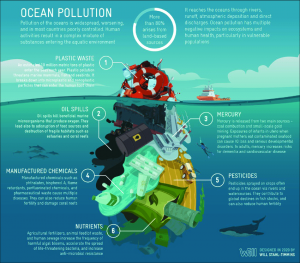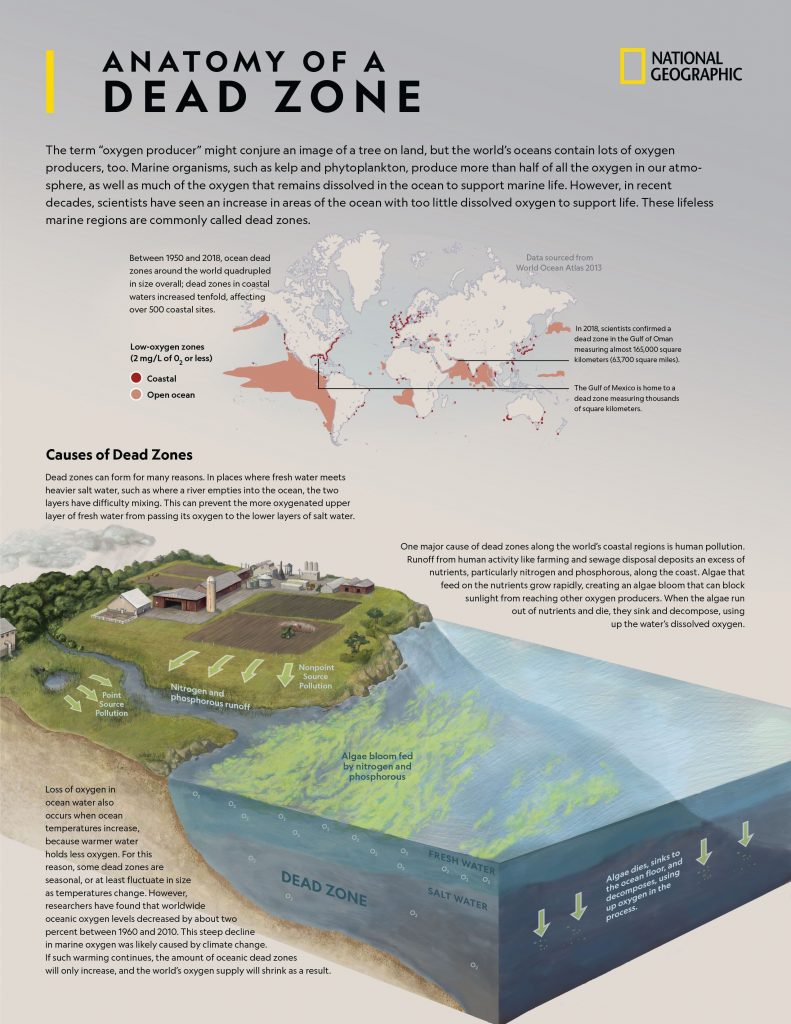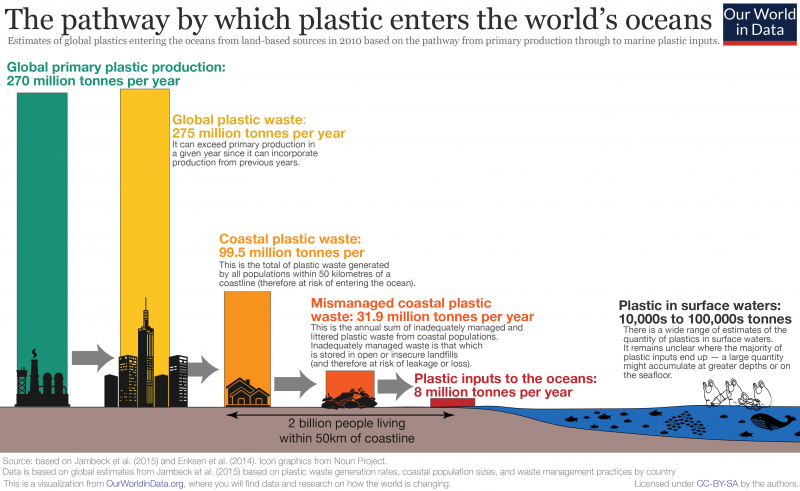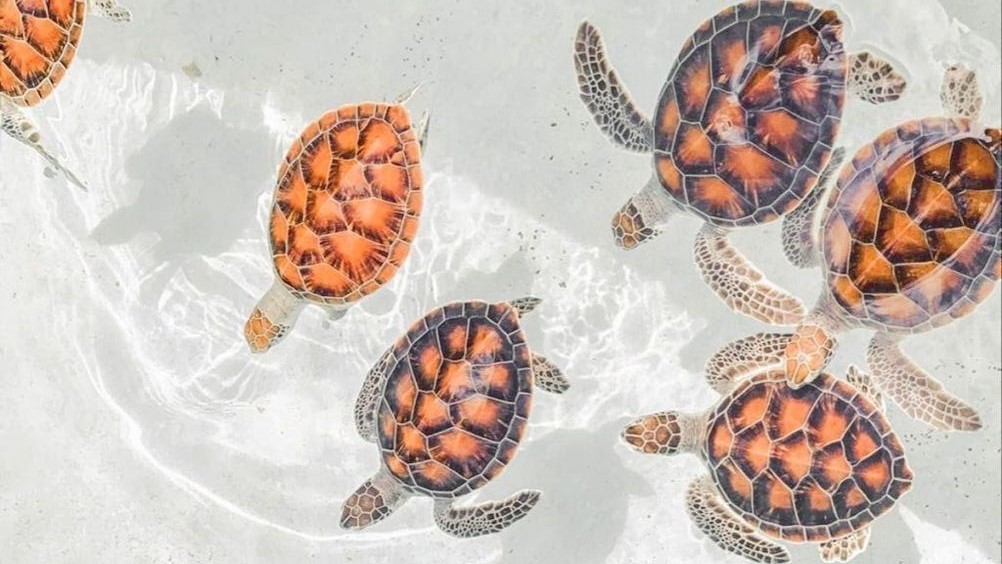Feel the cool breeze; laden with the scent of seafoam and salt-spray, drift into your skin, invigorating each cell. The sand between your toes inviting you to take a dip in the clashing shades of blue. The thought of meeting a sea creature while diving magical to think of. Now close your eyes and re-read the above sentences picturing yourself in the year 2030. Streaks of black draw across the shoreline as the waves wash across oil. The warning signs stretching far off warning of chemical burns for anyone daring, or rather stupid enough, to wade into the water. It’s magic to meet a sea creature here too, for seeing a living one is a rarity. This sci-fi-like future isn’t sci-fi, but rather the reality of decades of negligence, trying to be thwarted through years. This brings us to today, World Oceans Day 2021.
The more mistakes, the more resolve…
The first hints to a problem of a polymerized nature came to light in the 1970s, where concerns grew on the plastic litter in the North Atlantic ocean. With the population growing at an uncontrollable rate, and convenience considered as the priority, changes started to brew. In a lifestyle where waste is generated more than what is efficient and more than what we knew how to get rid of, the easiest solutions were taken. But, as is it is usually, the easiest solution is not the best. In this case, it was the worst.

Soon, waste that was spread out thinly started to become localized into gyres; vast open spaces in our oceans where slow-moving currents converge. Let’s take a small glance at a few of the mistakes we’ve made.
Fertilizing Marine Life
Stop here and ask yourself the question, “To where does it all flow?” Be it municipal sewage, livestock waste, and agricultural fertilizer, or even stormwater drainage.

River water, contaminated by incorrect disposal methods of liquid waste as well as due to (careless) “mistakes” in industrial constructions and practices gets mixed with the ocean first. The difference in densities of the two forms a layer of freshwater where algae thrive due to the reactions with sunlight. This abundance of algae freely enjoys their lifecycles, settling down on the ocean bed to decompose. However, this decomposition removes oxygen from the ocean, being one side of the problem.
The other side of the problem is that we facilitate this first side. The lack of prevention of untreated wastewater from entering the oceans, the accelerating pace of the usage of chemical fertilizers, and the destruction of wetlands and the ecosystems surrounding them only further this build-up of algae. This, in turn, creates a region where sunlight for marine plants is scarce, furthering the problem until oxygen levels are too low for the sustainment of life. In other words; creating what we refer to as a dead zone.
Micro-sized Global Destruction
First noted by oceanographer Captain Charles Moore, the wonder of convenient life, plastics, was identified to be a problem growing exponentially. Burnt plastics that were discarded after use often end up either in the recesses of landfills or carried out to the ocean. Exposed to harsh sunlight, the chemical reactions occurring due to the UV light falling on these plastics break it down into particles less than 5 mm across: Micro-plastics. Easily carried by ocean currents, these micro-plastics infiltrate eco-systems, appearing as an ever-expanding wasteland of plastic soup.

As an island with an awe-inducing variety of bio-diversity, plastic waste management is of utmost importance to us as seen by the above figure. From the refusal to use single-use plastic products to finding alternatives for plastics, the need to manage waste extremely cautiously is brought out by the figure below.

The presence of a large gyre in the Indian Ocean and the alarming position as the 5th greatest contributor to ocean plastic pollution is a significant reason for reconsidering our use of plastics, as Sri Lankans. The fact that many of our livelihoods depend on the ocean is a connection to the theme of this Oceans Day.
Oceans Day 2021: The Start of a New Decade
The dire consequences of our actions, as well as the unending growth of human needs, have been a calling card for all. On this Oceans Day, across the globe, we all join in under the theme of “The Ocean: Life and Livelihood”. United by the slogan of the decade, “The science we need for the ocean we want”, it is a race that governs the very existence of mankind.
Within this decade, the plan is to not only ensure that life in the ocean is conserved; but also that the dependence on the ocean by us humans is kept in the balance. A great eye is kept on the lookout for how well we manage this natural wonder. The convening of sciences in a multitude of disciplines, bringing out the most effective and long-term efficient solutions to our mistakes is given emphasis. The need to construct an equitable ocean economy and provide solutions to climate change is in mind too. Furthermore, to help overcome the hazards of overfishing and to meet human needs, a balanced system in which the global population is fed as well as marine biodiversity is conserved is another viewpoint addressed in this decade.
Finally, the massive leaps in data science and technology we often take for granted in daily life are set out to be used to observe, represent statistics, and deliver knowledge on the ocean.
Much more than ordinary…
As a country where the ocean is nothing short of being our lifeblood, a heavy responsibility falls on each and every one of our shoulders. The spreading dead zone surrounding the Bay of Bengal, the evergrowing pile of plastic waste released to the oceans, and the daily destruction of marine life and wetland ecosystems; are issues pertaining to the environment around us that we should never lose focus on.
With about 50-80% of Oxygen present in our atmosphere being produced by the oceans, it’s not only marine life that depends on this decade. A true countdown to see whether the source of life for all can be protected. A clock ticking off to see if we can all stand up for life throughout the globe. The very fate of mankind rests in our decisions. The decisions leading to the opening paragraph being a fearful reality, or a global effort to assure that life will live on.
“Accelerate the change –
Feeling equal and opposite all the same
Momentum rearranged –
Shout the echo – returning back but now changed…”– “Retrograde” – Pearl Jam
References:
01.https://www.un.org/en/observances/oceans-day
02.https://ourworldindata.org/plastic-pollution
03.https://www.condorferries.co.uk/marine-ocean-pollution-statistics-facts
04.Juniper, T. (2016). What’s Really Happening to Our Planet? London: Dorling Kindersley Limited.
05.The Ecology Book. (2019). London: Dorling Kindersley Limited.
06. https://oceandecade.org/assets/The_Science_We_Need_For_The_Ocean_We_Want.pdf
Image Courtesies:
01.Featured Image: https://bit.ly/2TaqaVV
02.Figure 01: https://bit.ly/3ilwpRu
03.Figure 02: Retrieved from National Geographic: https://www.nationalgeographic.org/media/anatomy-dead-zone/
04.Figure 03: https://bit.ly/3ioqOd7
05.Figure 04: https://bit.ly/3v75z2o

